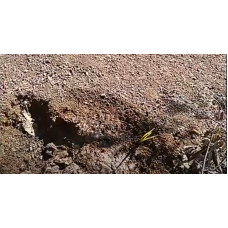Silt is a fine-grained sediment, mainly of organic origin, deposited in seas, lakes, reservoirs and rivers. Silt is the initial stage of sediment formation.
Silt is a water-saturated unconsolidated material formed at the bottom of water bodies. In the natural state it is fluid, in the dried state it is solid. It consists of both terrigenous and biological material.
Silt can occur as soil (often mixed with sand or clay) or as sediment suspended in water. Silt usually has a powdery appearance when dry and is not malleable when wet.
At the bottom of seas and continental water bodies (lakes, ponds) there is silt consisting of fine-grained products of rock destruction (terrigenous, calcareous, pelitic, silty, silty-pelitic) and microscopic shells or skeletal remains of marine organisms (globigerine, diatom, radiolarian, pteropod). Sludge enriched with volcanic ash (volcanic sludge) is also distinguished.
Sometimes silt is enriched with organic matter (sapropel), the decomposition of which causes hydrogen sulfide contamination or the development of putrefactive processes (rotten silt).
Sludge is used in agriculture as fertilizer or in compost heaps. Some muds (lake, pond, lagoon) are used as fertilizer and for mineral feeding of domestic animals, as well as in medicine, for mud treatment.
The accumulation of silt in harbors and fairways (siltation) creates problems for navigation, so dykes are constructed and dredging is carried out.
Sludge
Tags: sludge


